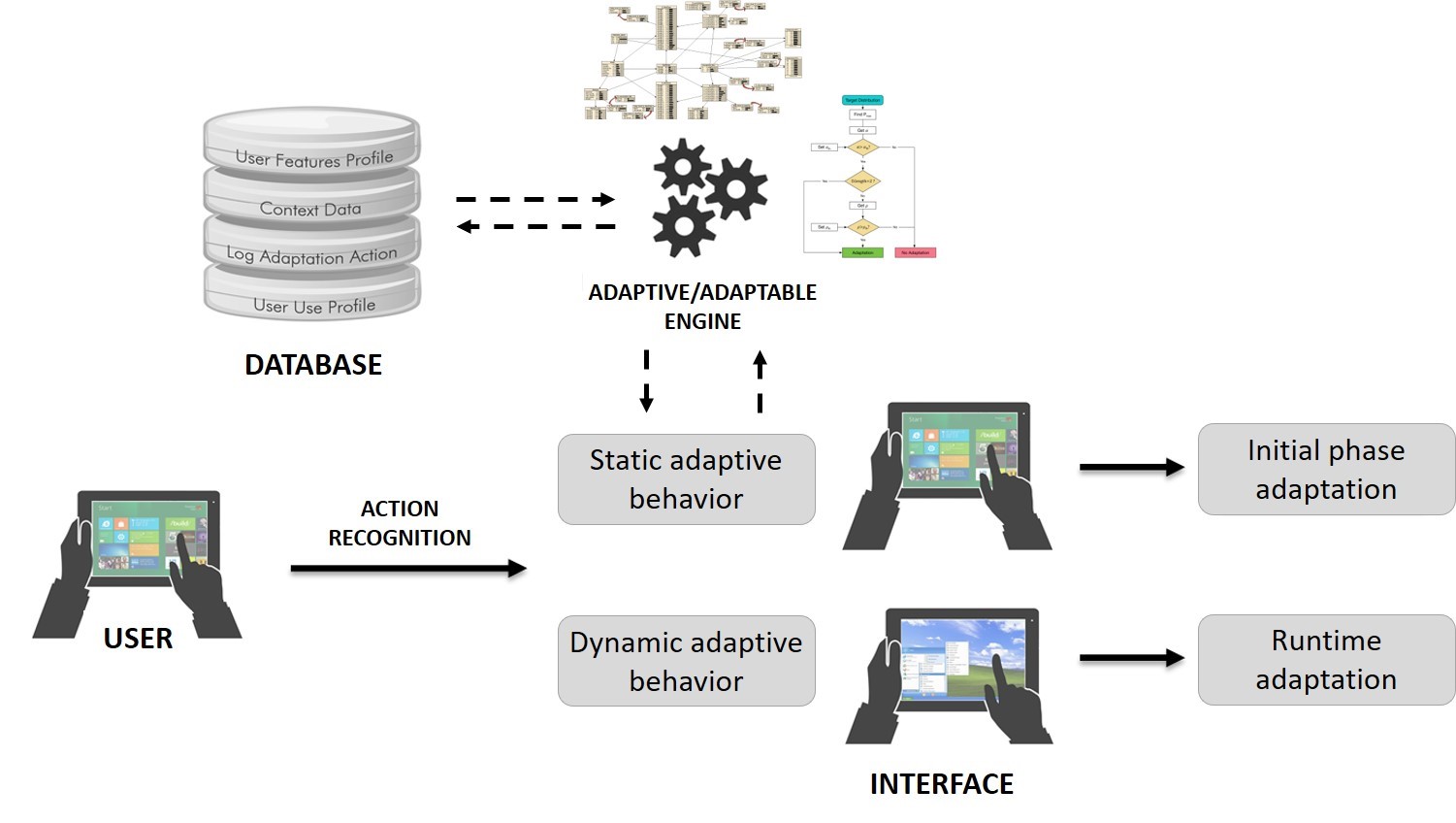In recent decades, people’s daily lives have been transformed by the fast ICT developing. In particular, the spreading of smart products and the possibilities to connect IoT devices together have changed the living environments. Moreover, the population ageing, which is a process that has been going on at the global level for a while, will increasingly affect the number of people with mental and physical impairments as well as various age-related chronic diseases. Advances in Human-Machine Interaction (HMI) have the potential to support the daily life of people, with or without impairment, by proposing interactive systems able to manage its knowledge about the user (i.e., who is using the system) and the environment (i.e., the context in which the user-system interaction takes place) in order to adapt information content, functions, and interaction modalities according to different users and context of use. To this end, a method that leads to the single instance construction in the interfaces design is inappropriate as it cannot accommodate the differences resulting from the needs of individual users. Therefore, the requirement of a systematic process (flow) that includes alternative decisions making procedures according to these differences is necessary. To achieve this objective, the research aims to develop new methods to support the design of new adaptive systems or to make an existing system adaptive. The main innovative aspects are:

Usability and Interaction Design Lab
